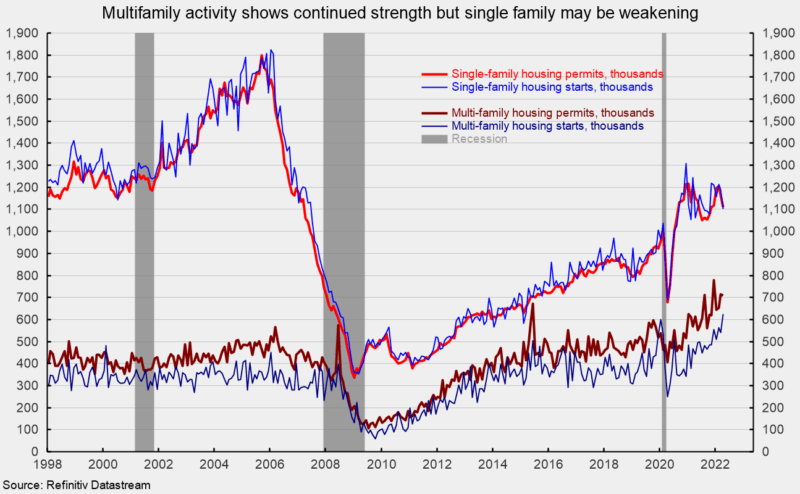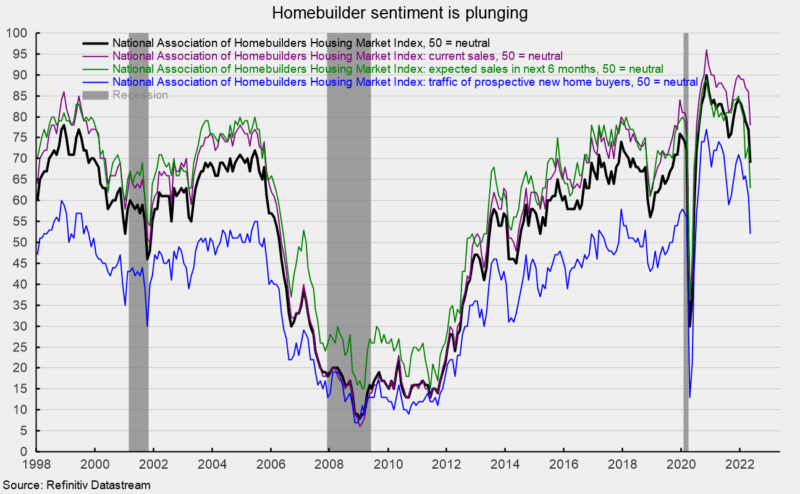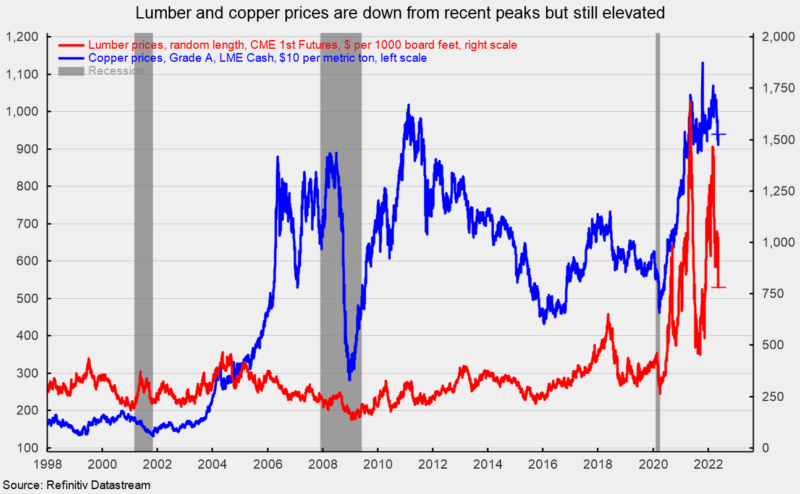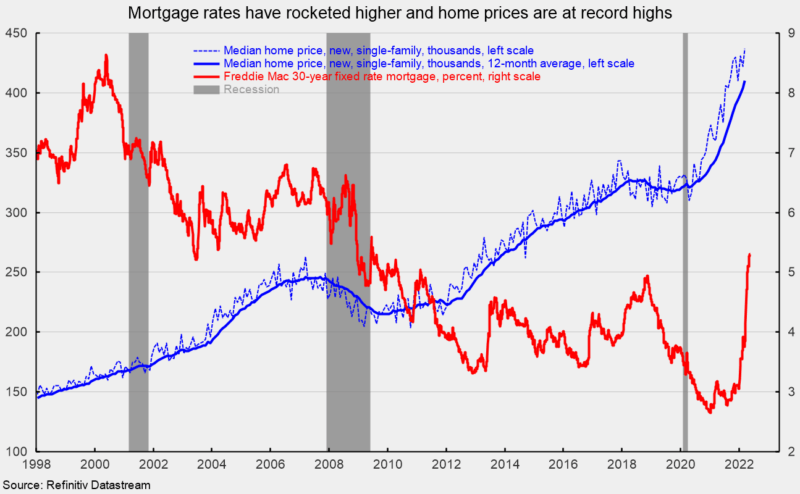Warning Flags for Home Construction
Total housing starts fell to a 1.724 million annual rate in April from a 1.728 million pace in March, a 0.2 percent decrease. From a year ago, total starts are up 14.6 percent. Total housing permits also fell in April, posting a 3.2 percent drop to 1.819 million versus 1.879 million in March. Total permits are up 3.1 percent from the April 2021 level.
Starts in the dominant single-family segment posted a rate of 1.100 million in April versus 1.187 million in March, a drop of 7.3 percent but are still up 3.7 percent from a year ago (see first chart). Single-family permits fell 4.6 percent to 1.110 million versus 1.163 million in March (see first chart).
Starts of multifamily structures with five or more units increased 16.8 percent to 612,000 and are up 42.3 percent over the past year while starts for the two- to four-family-unit segment fell 29.4 percent to a 12,000-unit pace versus 17,000 in March. Combined, multifamily starts were up 15.3 percent to 624,000 in April and show a gain of 40.5 percent from a year ago (see first chart).
Multifamily permits for the 5-or-more group fell 0.6 percent to 656,000 while permits for the two-to-four-unit category decreased 5.4 percent to 53,000. Combined, multifamily permits were 709,000, off 1.0 percent for the month but up 15.7 percent from a year ago (see first chart).
Meanwhile, the National Association of Home Builders’ Housing Market Index, a measure of homebuilder sentiment, fell again in April, coming in at 69 versus 79 in April, and down sharply from recent highs of 84 in December 2021 and 90 in November 2020. Rising mortgage rates, elevated home prices, and higher input costs are major concerns (see second chart).
All three components of the Housing Market Index fell sharply in April. The expected single-family sales index dropped to 63 from 73 in the prior month, the current single-family sales index was down to 78 from 86 in April, and the traffic of prospective buyers index fell to 52 from 61 in the prior month (see second chart).
Input costs are a concern for builders. Key input materials costs are down from peaks but still elevated with lumber coming in at around $780 per 1,000 board feet in mid-May, down from peaks around $1,700 in May 2021 and $1,500 in early March 2022 while copper was down slightly at $9,400 per metric ton (see third chart). The high input costs will pressure profits at builders and may lead to more price increases for new homes (see fourth chart).
Furthermore, mortgage rates have rocketed higher recently, with the rate on a 30-year fixed rate mortgage coming in at 5.30 percent in mid-May, nearly double the lows in early 2021 while home prices are at record-high levels (see fourth chart). Higher home prices and higher mortgage rates are likely to be significant headwinds for future housing activity.
While the implementation of permanent remote working arrangements for some employees may be providing continued support for housing demand, record-high home prices combined with the surge in mortgage rates will likely work to cool activity in coming months. Threats to future demand combined with elevated input costs are sending homebuilder sentiment plunging. The outlook for housing, especially the single-family segment, is deteriorating rapidly.









